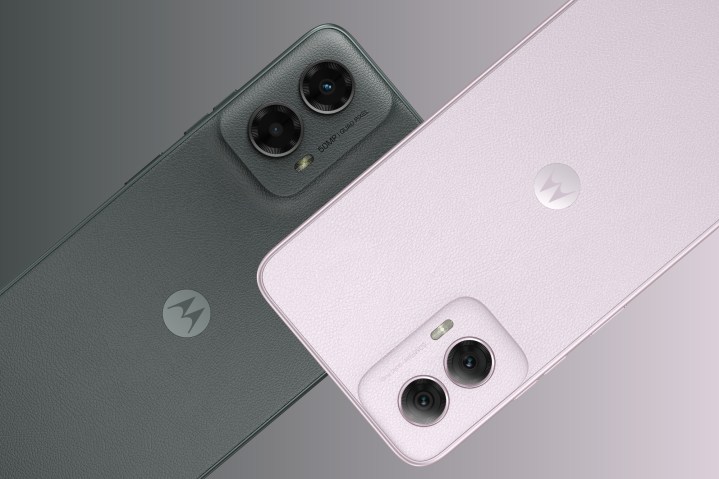
Budget phones can slip under the radar when shiny, powerful flagships launch. But if you’re in the market for a smartphone that gets the job done and won’t blow a four-figure hole in your bank balance, then a great budget smartphone is the way to go.
- Moto G Power 5G vs. Moto G 5G: specs
- Moto G Power 5G vs. Moto G 5G: design and display
- Moto G Power 5G vs. Moto G 5G: performance, battery life, charging
- Moto G Power 5G vs. Moto G 5G: cameras
- Moto G Power 5G vs. Moto G 5G: software, updates, and special features
- Moto G Power 5G vs. Moto G 5G: price and availability
- Moto G Power 5G vs. Moto G 5G: which should you buy?
Motorola has released some great flagships in the last year, but if we’re being honest, it excels in the budget phone space. The Moto G Power 5G (2024) and Moto G 5G (2024) are Motorola’s two new budget smartphones for this year. While the two may seem similar, with similar prices, they’re actually two very different phones that suit two very different types of people.
Both Moto Gs are solid-looking choices for anyone looking for a great Android phone for less, but which should you buy? We compared the two to find out.
Moto G Power 5G vs. Moto G 5G: specs
| Moto G Power 5G (2024) | Moto G 5G (2024) | |
| Size | 167.2 x 76.4 x 8.5 mm (6.58 x 3.01 x 0.33 inches) | 164.4 x 75 x 8.2 mm (6.47 x 2.95 x 0.32 inches) |
| Weight | 201 grams (7.09 ounces) | 194 grams (6.84 ounces) |
| Screen size | 6.7-inch IPS LCD (120Hz) | 6.6-inch IPS LCD (120Hz) |
| Screen resolution | 2400 x 1080 resolution at 393 pixels per inch | 1612 x 720 resolution at 267 pixels per inch |
| Operating system | Android 14 | Android 14 |
| Storage | 128GB | 128GB |
| MicroSD card slot | Yes | Yes |
| Tap-to-pay services | Google Pay | Google Pay |
| Processor | Mediatek Dimensity 7020 | Qualcomm Snapdragon 4 Gen 1 |
| RAM | 8GB | 4GB |
| Cameras | Rear: 50-megapixel primary and 8MP ultrawide
Front: 16MP |
Rear: 50MP primary and 2MP macro
Front: 8MP |
| Video | Rear: Up to 1080p at 30 fps
Front: Up to 1080p at 30 fps |
Rear: Up to 1080p at 30 fps
Front: Up to 1080p at 30 fps |
| Bluetooth | Yes, Bluetooth 5.3 | Yes, Bluetooth 5.1 |
| Ports | USB-C, headphone jack | USB-C, headphone jack |
| Biometrics | Side-mounted fingerprint sensor | Side-mounted fingerprint sensor |
| Water resistance | Water-repellent design | Water-repellent design |
| Battery | 5,000mAh
30W fast charging 15W fast wireless charging |
5,000mAh
18W fast charging |
| App marketplace | Google Play Store | Google Play Store |
| Network support | 5G | 5G |
| Colors | Midnight Blue, Pale Lilac | Sage Green |
| Price | From $300 | From $200 |
| Available from | Most major offline and online retailers | Most major offline and online retailers |
Moto G Power 5G vs. Moto G 5G: design and display
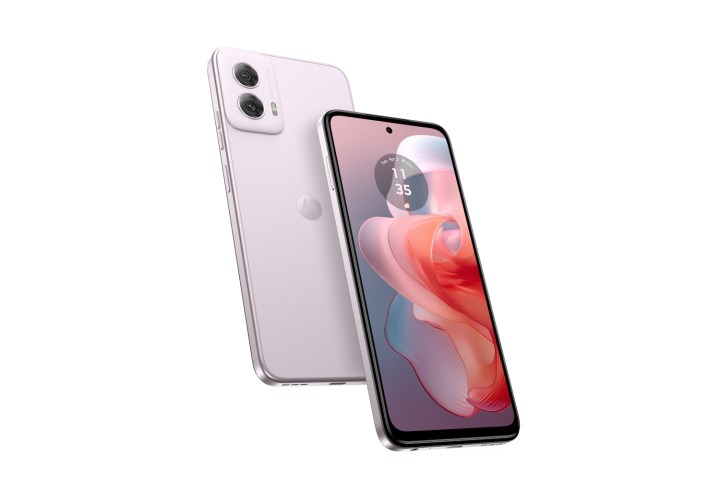
At first glance, these are two similar-looking smartphones. Both have dual-lens rear cameras in an elevated housing, with vegan leather backs. Around the front, thin bezels surround the large displays, with a hole-punch selfie camera centrally placed at the top of the screen. The Power is the larger of the two, with a monstrously large 6.7-inch IPS LCD panel. It’s only a small difference, though, as the Moto G has a 6.6-inch display.
The quality of the two displays is quite different, though. While both have 120Hz refresh rates, the G Power sports a 1080p display, while the Moto G tops out at 720p. That’s really very low, especially on a big 6.6-inch screen, and you’ll absolutely be able to tell the difference between the two phones. The Moto G’s resolution isn’t up to snuff, and that’s a shame.
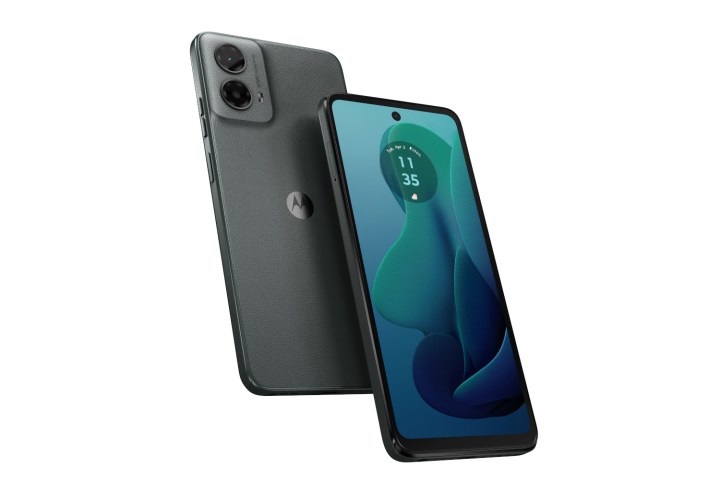
Both have water-repellent coatings, but no waterproofing. There are side-mounted fingerprint sensors, too, which is fine, as you can’t expect under-display scanners at this price (yet). Excitingly, both have headphone jacks, so you can plug in your old-fashioned wired earphones.
The Moto G Power’s higher-resolution display helps it take this quite easily.
Winner: Moto G Power 5G
Moto G Power 5G vs. Moto G 5G: performance, battery life, charging

Being budget phones, you’re not going to find game-breaking performance here. However, budget chips are much more capable than ever before, and you should be able to get good performance out of both phone. The Moto G Power has a MediaTek Dimensity 7200 processor, while the Moto G uses the Qualcomm Snapdragon 4 Gen 1 chip. Both are 6nm chips, but without having tested them, we can’t really say which will be the more powerful. The G Power has a significant edge in RAM, though, sporting 8GB, compared to the Moto G’s paltry 4GB. That edge is likely to give the Power a real boost when swapping between apps and handling more power-hungry processes.
We also can’t really say how well the batteries will hold up in real-life use, but since both have 5,000mAh cells and budget specs, expect them to last days on a single charge. The Power really earns its name when it comes to recharging, though. While the Moto G has a decent 18W charging rate, the Power rockets past it with a 30W charging rate and 15W wireless charging. That’s an enormous difference, and the 30W charging rate, in particular, means the Moto G Power exceeds even flagship phones like the Samsung Galaxy S24 and Apple iPhone 15.
We won’t know which of the two phones is the more powerful until we’ve had a chance to play with them, but the Moto G Power wins here anyway due to its much faster charging and the addition of wireless charging.
Winner: Moto G Power 5G
Moto G Power 5G vs. Moto G 5G: cameras
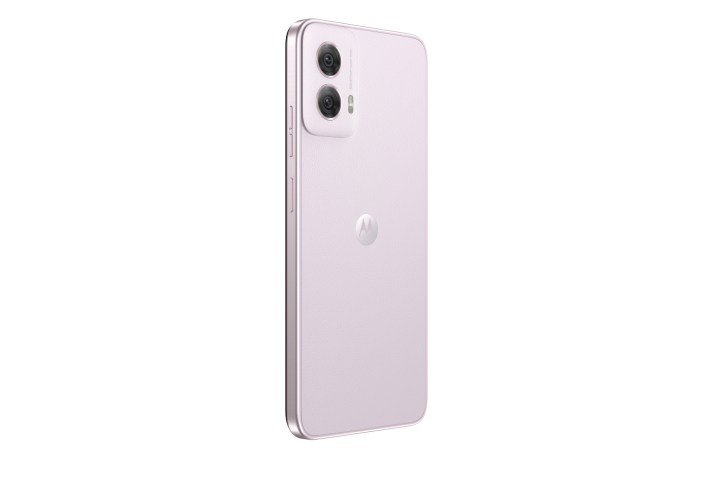
This is going to be a tricky category to score since we haven’t had hands-on time with either phone yet. However, there are some assumptions we can make about the likely performance of each phone’s cameras based on previous examples.
We’ll dive straight into it with a bold proclamation: Macro lenses are pretty much always terrible. So, we don’t have much faith that the Moto G’s 2-megapixel macro lens will be anything to write home about. Therefore, it’s likely the phone will be, in practice, a single-lens camera. Thankfully, it might be a decent main lens. The Moto G seems to have the same 50MP lens we saw in last year’s Moto G Power, which was a pretty good snapper, even if it relied on having good lighting conditions to produce good shots.
This would be enough to force a draw if the Moto G Power hadn’t had some upgrades. It’s rocking the same 50MP lens, but it’s now joined by a 16MP ultrawide lens. It may be that the ultrawide lens is lacking, but until we’ve had a chance to play with it, we won’t know for sure. It’ll still be extra versatility though, and frankly, who actually needs a macro lens? Throw in the optical image stabilization on the Power, and this is another win for the $300 phone.
Winner: Moto G Power 5G
Moto G Power 5G vs. Moto G 5G: software, updates, and special features
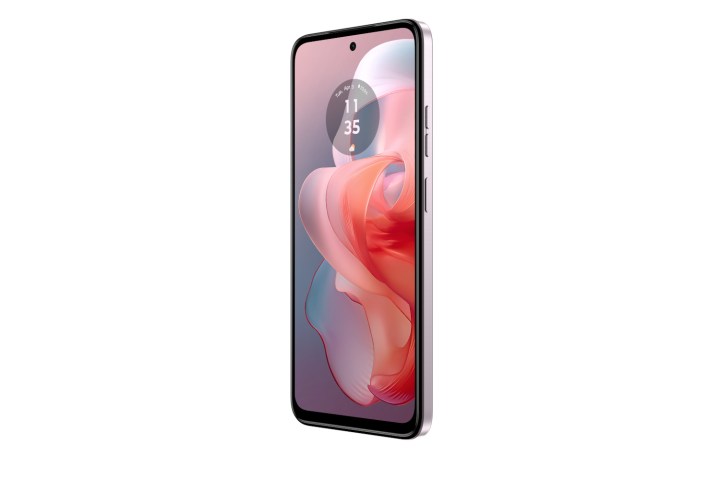
This is likely to be a short one, as there’s little to really separate the two here. Both phones run Android 14, with Motorola’s skin laid thinly over the top. Motorola’s changes are small, and for the most part, you’re likely to mistake it for a pure Android build. There are a few additional apps and support for Motorola’s Moto Gestures — including the ability to make a chopping motion to turn the flashlight on and use three fingers to take a screenshot. They’re among the quietest, but most useful additions Motorola has made to Android, and you should absolutely use them.
It’s a similar story for updates:. We haven’t been told how many updates these two phones will receive, but given previous Moto G releases, it’s safe to assume both phones will get just one Android upgrade — going from Android 14 to Android 15 when it releases later this year.
In terms of special features, both have the Moto Gestures we mentioned earlier and access to the next generation of cell service — 5G. As a result, there’s little to really separate the two. This is a tie.
Winner: Tie
Moto G Power 5G vs. Moto G 5G: price and availability
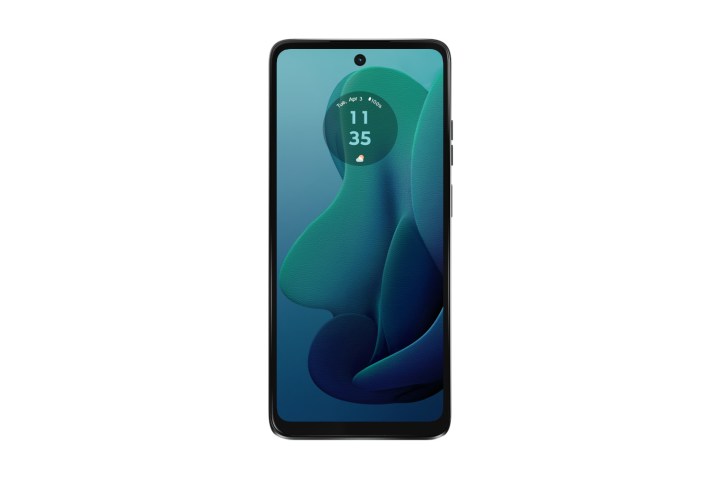
As you might expect, these are two very reasonably priced phones. The Moto G Power 5G (2024) costs $300 and will be released on March 22. To begin with, it’ll only be available with Cricket, but it will be coming to other carriers later. If you want to buy it unlocked from retailers, then you’ll have to wait until March 29.
The Moto G 5G (2024) costs $200 and is also weirdly limited in availability to start with. It’s available from March 21, this time from T-Mobile and Metro by T-Mobile. Other carriers will join in at an unspecified date, and if you want to buy it unlocked, it won’t be available until May 2, which is a heck of a time gap.
Moto G Power 5G vs. Moto G 5G: which should you buy?

It’s pretty clear which of these two phones you should buy: the Moto G Power 5G (2024). For just $100 more, you get a phone with a much prettier display, a more versatile camera, and much faster charging. It even has wireless charging! The Moto G 5G (2024) is very much a lesser version of the Power, and if you can afford the extra $100, then the Power absolutely seems worth it.
But keep in mind that $100 is a full half of the Moto G’s asking price, and if you’re shopping at this price range, you may not want to spend that extra moolah. And that’s fine, but should you buy the Moto G 5G (2024) in that case? At this point, we’d advise caution. The base Moto G was underwhelming in previous years, and we don’t want to recommend a phone you might regret buying. Instead, look at the OnePlus Nord N30 5G. It can be found for $50 more, and it’s a great budget smartphone that might be worth getting instead of the Moto G. In an ideal world, we’d tell you to wait for reviews because, at the moment, buying the standard Moto G could be a risk.


